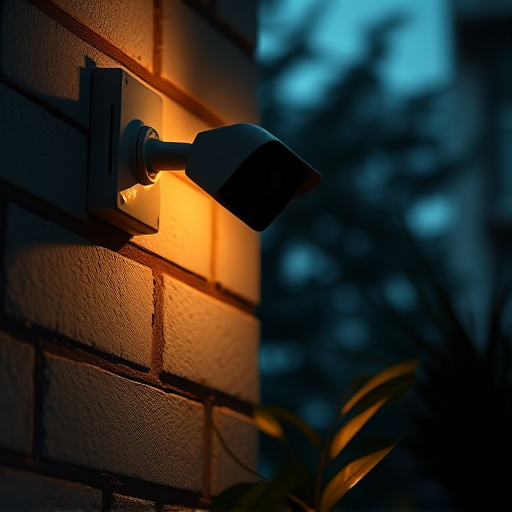Hidden security cameras, disguised as everyday items like smoke detectors or plants, offer discreet surveillance for enhanced home and business protection. These advanced devices provide high-resolution footage, night vision, and remote access via secure connections, allowing users to monitor activities in real time. Popular due to their versatility, effectiveness, and peace of mind they bring, they can be strategically placed in areas like entryways or offices. Types range from wireless models to motion-activated versions with AI integration for suspicious activity detection. Installation requires careful consideration of privacy and local laws, with regular maintenance and data security practices essential.
Discover the world of hidden security cameras—discreet surveillance solutions that offer enhanced peace of mind. This comprehensive guide explores the concept, benefits, types, and installation best practices of these innovative devices. From home protection to business monitoring, learn why choosing a discreet camera system can be a game-changer in securing your space. Uncover the latest technologies and ethical considerations to make informed decisions about your hidden security camera setup.
Understanding Hidden Security Cameras: Unveiling the Concept
Hidden security cameras, also known as covert or concealed cameras, are a sophisticated form of surveillance technology designed to operate discreetly and often go unnoticed by individuals in a given space. These innovative devices are engineered to blend seamlessly into their surroundings, offering a level of discretion unlike traditional security systems. Typically, they can be disguised as everyday objects like smoke detectors, light switches, or even plants, making them an attractive option for those seeking robust yet unassuming home or business security.
The concept behind hidden cameras is to provide comprehensive coverage while maintaining privacy and avoiding the typical deterrents that may accompany visible security measures. With their advanced capabilities, these cameras capture high-resolution footage, often with night vision, and can be remotely accessed via secure connections, enabling users to monitor activities in real time or review recorded videos as needed. This technology has gained significant popularity due to its versatility, effectiveness, and the assurance it offers to individuals prioritizing safety and peace of mind.
Benefits and Applications: Why Choose a Discreet Camera System?
A hidden security camera offers a discrete yet powerful way to protect your home or business, providing peace of mind and enhanced safety. Unlike traditional cameras that can be easily spotted, these discreet systems blend seamlessly into their surroundings, making them nearly invisible. This unobtrusive nature is a significant advantage, as it allows for constant monitoring without alerting potential intruders.
Whether you’re looking to secure your home or keep an eye on employees, hidden security cameras provide numerous benefits. They can be strategically placed in areas like entryways, offices, or storage rooms, offering real-time surveillance and evidence should any issues arise. With advanced technology, these cameras also enable remote access through smartphones or computers, giving you control over your security from anywhere.
Types and Technologies: Exploring the Options Available
Hidden security cameras, also known as spy cameras, come in various types and technologies, each offering unique advantages for different applications. From wireless options that can be easily installed and controlled remotely to advanced motion-activated models with night vision capabilities, there’s a camera to suit every need.
One popular type is the miniature hidden camera, designed to blend seamlessly into everyday objects like picture frames or smoke detectors. These tiny cameras pack powerful features, such as high-definition video recording and infrared technology for low-light conditions. For more sophisticated needs, advanced hidden cameras with built-in AI can detect and track movement, providing alerts and recordings when suspicious activity is detected. This level of technology ensures not only discretion but also reliable security monitoring.
Ethical Considerations and Best Practices for Installation
When installing a hidden security camera, it’s crucial to balance personal privacy with legitimate safety concerns. These devices can be powerful tools for deterring crime and monitoring homes or businesses, but their use also raises ethical questions. It’s essential to ensure that any hidden camera installation respects the privacy rights of individuals within the surveillance area. This includes obtaining consent from residents, especially in shared living spaces, and clearly communicating the presence of cameras to prevent any feeling of being secretly monitored.
Best practices for installing a hidden security camera involve discretion, legal adherence, and technical proficiency. Cameras should be strategically placed where they offer optimal visibility without invading privacy. They must also comply with local laws and regulations regarding surveillance technology. Additionally, ensuring data security and proper storage of footage is vital to prevent unauthorized access or misuse. Regular maintenance and testing ensure the camera’s effectiveness while maintaining a delicate balance between security and privacy.
